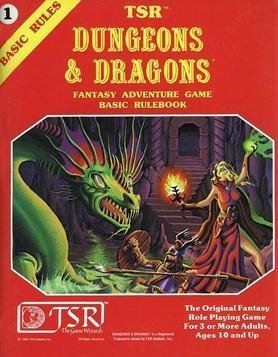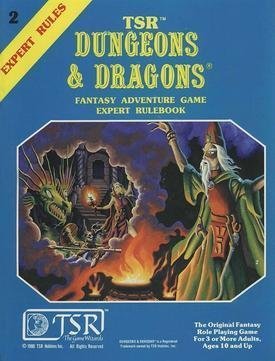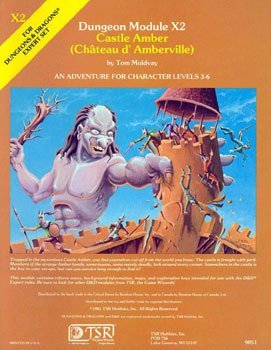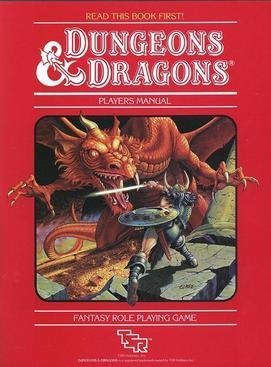
Previously on Game Restart: [it’s a series]
The thing about arcades is that arcades are expensive.
Adjusted for inflation, a quarter in early 80s money is approximately 63¢ in today’s money at the time of this writing. Most people probably aren’t used to spending money after the initial investment in the console and then the game for their home, but imagine spending that for every three tries, lives, or continues.
And some games in the 1980s were 50¢ (or $1.25 as of 2018). Many remember Dragon’s Lair (I certainly do), one of several LaserDisc based games which rocked arcades back in the day, and games like these certainly commanded a pretty high price. I have to admit, my total investment in that particular bit of entertainment probably amounts to no more than $1.50 in 80s money. Nine lives all ended in failure, and then the bank was broke.
I didn’t investigate any of the others, though I was morbidly fascinated by the gory bits present in the attract mode for Bega’s Battle standing in the entryway to the base exchange in Yokota.
Still, on occasion, I’d spring for Pac-Man, but since most of these games demanded a lot more than home console versions, they tended to end pretty quickly. I was more keen on spending my video game money on books, specifically fantasy and science fiction novels books (except for Star Wars, I was a latecomer to comic books, though my parents certainly kept us in Archie, Carl Barks, and assorted horror and the occasional superhero book).
Eventually, however, in 1984, I would catch my first whiff of table-top role-playing games, and this would neatly divert most of my meagre funds.
Modules were $5.50, rulebooks for the Moldvay/Cook Basic/Expert were $6.00, and I want to say boxed sets were something like $12, but that included dice and sometimes another module, too. The hardcover books ranged from $15 to $18 (for the Advanced Dungeons and Dragons Dungeon Masters Guide). I was also into Star Frontiers and paperback game books like Joe Dever and Gary Chalk’s Lone Wolf series.
Arcades got a little play, but I spent much less time in them than I spent in libraries. And clearly, I could certainly kill some time gazing at the books at the Stars and Stripes bookstores over the summers (or at Waldenbooks, stateside).
When it came to money, what I wasn’t spending on Zoids, I was saving for books, which frequently came to me used. I spent a lot of time amassing my collection of role playing game materials, and most of it I’ve kept since those days. Virtually everything else, like the video games, Commodore 128, and toys, were either lost or sold somewhere along the way. Moving a lot meant regularly purging; I purged books absolutely last and only if it was absolutely necessary. I did my best to keep the books, but the Vectrex and Atari 2600 never properly belonged to me anyway.
Moving was big, and was done every two years without fail—even if it was literally down the street on base. Once our stuff was packed up and shipped out, we had a short empty stay in our former residence—always as empty as it was whenever we first arrived two years prior—and then either drove or flew out to the next destination. Often, there would be extensive road trips regardless, because that’s when the vacations would be timed: between Dad’s assignments, over the summer so we missed as little school as possible.
April or May, 1984 involved a trip to pick up some cousins and we hied forth to Orlando and Disney World and—with the greatest possible anticipation by myself—EPCOT Center. I might play games in medieval-styled fantasy worlds, but at heart I’ve always been a futurist, and this marvelous new place promised to speak eloquently to me of better futures.
I voraciously consumed science fiction in print and whatever I could get on television or in theaters and home video. Star Wars at the drive-ins had been a favorite of mine since I was seven. The Empire Strikes Back made a greater impact, but was more downbeat, and I’d seen Return of the Jedi only the year before in an outdoor theater in Antigua. Anything else was delayed to home video. Living abroad often meant missing or being otherwise behind whenever it came to pop cultural stuff. Base TV (AFRTS) also didn’t have commercials, so we only saw local programming, not the stuff people were being subjected to stateside.
I was more a fan of our space program, and NASA. My elementary school in Antigua was named after the astronauts of Apollo 1 (Chaffee, White, and Grissom), and there was a small mural of the astronauts inside the building.
Heck, it was a small building, holding grades 1-4 in one room, and 5-7 in the next. There was a small library—read Watership Down for the first time from there—and a few bathrooms and closets but that was it for the most part. It was a very small school. Eighth graders were sent elsewhere, I forget where, but it was moot in my case, since I would be repeating seventh grade when I got to Japan. Being held back for “developmental reasons” always struck me as bullshit. I could have been out of school one year earlier. I got back at everyone by failing the ninth grade, but that backfired and I was moved into the tenth grade on Adak anyway. I may have honestly earned a bit of my opposition to establishments which practice hypocrisy back then. The world of adults made no sense, and they were too inconsistent with the rules to be trusted.
But this was a trip to remember, and I was looking forward to it.
Apart from the long drive with cousins, there was always entertainment. Reading in a moving vehicle was still something I could do at that time, so I did that a lot. There were also a very few portable electronic games. Crazy Climber (from Bandai), a “Monkey Business” wristwatch (also by Bandai), and an VFD (vacuum fluorescent display) game I’d resurrected from dead—purchased for about a dollar at a yard sale on Antigua. It came with considerable battery corrosion from four AA batteries, and I actually spent a lot of time trying to recover it to a working state. Some soldering was required (my Dad helped with that part) and I was able to get it working again. It was Star Hawk by Mattel, the first electronic game I would ever fix. Anyway, these saw some use, but these would be mostly forgotten when we arrived at the campsite.
KOA campgrounds were all over the US (near as I could tell), and we’d spent a lot of time in them, driving all over the country, saving money (I assume) on hotel bills. We set up tents, visited bathrooms, gazed at the swimming pool, and … and then …
And then it rained like a swimming pool poured through a sieve for almost the entire week. I didn’t care: Disney World/EPCOT were too nearby to feel anything but slightly dampened anticipation.
The only dry spot was the KOA laundry and check-in building where the snacks and vending machines were and—
And there it was. One arcade console by Atari—still close enough to the heyday to inspire excitement even in a jaded, dampened, and world-weary twelve-year-old—and no mere upright cabinet console this, and certainly not the blocky-chunky pixels of the Atari 2600 home console but the clean vector graphics I would later associate with the Vectrex; this was a cockpit to climb into to save the rebel alliance from the Death Star. (And it had some early voice samples from the film itself.)
Star Wars was fifty cents to play. Half a dollar. Cripplingly costly.
Objectively I knew I needed to save money for the Disney experiences which were the entire basis for the whole trip, but I also must needed to play it. It’s one thing to grab a friend’s X-wing (er, with permission—I never had my own), and run around the playground like a lunatic blowing up the enemy, one gets tired of that kind of exercise. Also there are compromises like Luke technically being unavailable so a Micronaut Time Traveller had to step in and save the day, but imagination is as fierce and unyielding as it is malleable.
This was the summer of 1984, and I probably spent 70% of my budget into that damned machine. The parents did not object. It was rainy, and we had been holding out for better weather, and it was warm and dry nearer to the glow of the screen. X rays are like that. And what was I going to do otherwise? Go swimming? That was like walking.
The rain relented slightly, and I had a fabulous time at EPCOT and Disney World (adventures to recount later), and it turns out, even after coaxing one last play before we packed up camp and left, I was unable to end the Death Star. That fight would have to continue later.
Back to 2003, at a Tacoma Fred Meyers, I wander into electronics, just to see if there was anything new. I may have been killing time for the next bus home. Fred Meyer doesn’t seem to do this any more for home consoles, but they had a video game kiosk set up for the Nintendo GameCube.
Nintendo. I’d heard of them. Why not. The demo is playing Rogue Leader: Rogue Squadron II. I grasp the controller, and feel my way around playing for a bit.
And I’m back in 1984, sitting in the cockpit of an X-wing, trying to ‘splode the Death Star.
In 1995, graphics like this would have been mind-blowing. But I regularly used SGI hardware far more capable than any video game console, and there wasn’t that much difference between this and the PS2. Perhaps the GameCube was better overall, but that’s not the whole experience. Running down TIE fighters and crashing into walls is.
I bought the game. I bought the GameCube (Indigo, because, reasons). I bought a copy of Luigi’s Mansion. And I bought a wireless Wavebird controller all on the same day.
It would take a few months, and I certainly didn’t know it at the time, but this machine would put dust on the Sony PS2.



